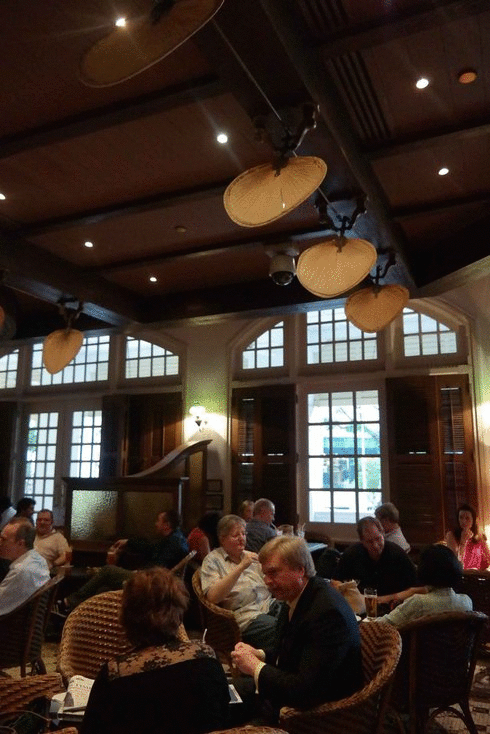Pretty soon I found myself wandering the streets of Little India. Singapore has set up a fantastic system of tourist information, with signs and boards up around the city explaining the city's rich history and heritage as you walk down the street. As I crossed over Rochor River on Serangoon Road I found myself outside a big, peach-and-mint-green coloured building (not, for the avoidance of doubt, a pleasant colour scheme combo), facing just such a sign. It told me about the Tekka Centre, an old market that had stood on the site since the 1980s, having been relocated there from it's predecessor, established in 1915. I had to pop in and have a mosey around.
Starting on the first floor (which, honestly, seems like the most logical approach when you go in), it's a fascinating market - focussing very heavily on traditional Indian clothing, tailoring and costumery.
There's also a couple of fascinating bric-a-brac stores you'll find about the place as well, selling all sorts of things you couldn't imagine.
But the real treat, for me, was coming around the corner and seeing down into the floor below - the Little India Wet Market.
Before I begin, I'll just start with this: You seem to be able to get pretty much anything you want at the Market. Fresh fruit and veg is in absolute abundance, spilling out of the little shop fronts that the market traders have rented, resulting in a very busy, very cramped, and rather chaotic feeling corner of the market.
The Egg House. Selling...
…eggs. No surprises there, really.
There's dried goods in prodigious great quantities.
As well as a stall that sold ONLY bean shoots and curd, again in enormous quantities and varying grades.
There's also plenty for the meat lovers out there.
Including the cuts we don't see so regularly on Sainsbury's shelves...
But a massive part, almost the dominant part, of the market is given over to fish. Fresh as a daisy and in copious quantities - hardly surprising given that it's an island nation.
And then, as if not done already, there's more. That's right, a whole hawker centre is crammed in there as well. Just as the Maxwell Road Hawker Centre, being firmly located in the heart of the Chinese quarter, has a heavy Chinese cuisine slant, here it's very much an Indian food paradise.
Sadly, I had an appointment for lunch - and a work one at that - so there was no chance to sample the local delights. I can't tell you how good they all smelt and looked, though. I was half tempted just to rock up at lunch with the bosses and have a second meal…
One of my overriding and enduring impressions of Singapore is it's extraordinary mixture of cultures. There is a huge range of people living there from all over the world. It's something I couldn't have anticipated in advance and a defining feature of the city that will stay with me.
I'll leave you with a couple of pictures of the Sri Mariammam Temple on South Bridge Road. Rather than being in Little India, this Dravidian style Hindu temple is actually in the Chinese quarter, only a couple of blocks from Maxwell Road. It's truly stunning and - along with the enormous Buddha Tooth Relic Temple and Museum nearby - an example of both Singapore's rich cultural mix and its stunning tourist sights.
That really brings to an end my Singapore odyssey. Until next time, at least. It was an absolute blast, and a fascinating place to visit. I look forward to going back soon.
Normal Grubster service to resume with the next post!
- GrubsterBoy -













































































